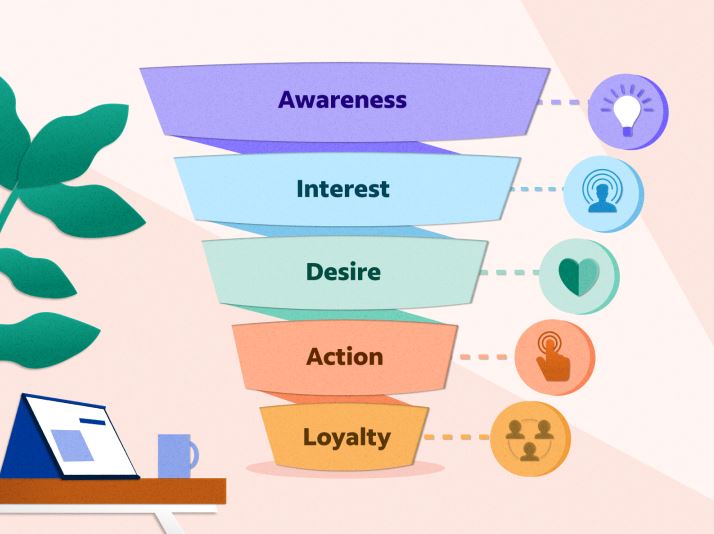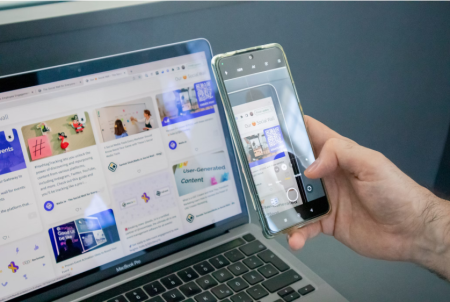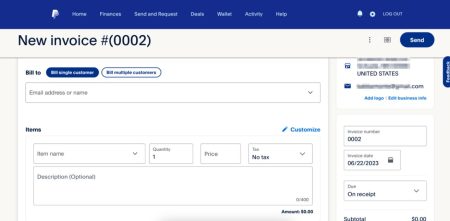We’re willing to bet you have tons of content that generates leads and informs prospects about your brand. But what about the customers who know about your product and have already done extensive research?
You need content that speaks specifically to them and convinces them to make that final purchase. And that’s where bottom-of-funnel marketing comes in.
What is bottom-of-funnel marketing?
Bottom-of-funnel marketing (often abbreviated as BOFU) is a marketing strategy focused on persuading consumers who are on the cusp of purchasing. Customers who are at the bottom of the sales funnel are usually considering just a few options and need that final nudge to make a decision.
Compared to the top or middle of the marketing funnel, the bottom stage is where:
- Buyers have already evaluated your product.
- They’re familiar with your internet presence and brand identity.
- They know your company’s values and mission statement.
- They have a clear idea of the benefits your product can provide.
- They’re ready to make a purchase and need a final push in the right direction.
In top-of-funnel marketing, your main concern is generating awareness for your product. There’s a lot of overlap here with demand generation tactics.
With middle-of-funnel marketing, you want to build brand loyalty and nurture leads. This is where lead magnets, webinars, and other types of content come into play.
But bottom-of-funnel marketing is all about closing the deal and turning potential customers into satisfied buyers.
5 best strategies for bottom-of-funnel marketing
To get those conversions we’re talking about, you need to have the right content and overall approach. If your tactics are misaligned with your goals, you’ll end up wasting time and resources.
Here are five strategies to help you get the most out of your bottom-of-funnel efforts:
1. Remarketing
Remarketing involves showing targeted ads to users who have previously interacted with your website, app, or marketing/sales collateral. The idea is to remind these potential customers about your product and what it offers.
With remarketing, you’re basically reaching out to leads who have already shown interest in your product or service, which makes it an incredibly efficient strategy. Since you already know they’re familiar with your brand, you can focus on showcasing the unique benefits and features of your product to convince them to make a purchase.
Depending on the platform, you can customize these ads based on previous behavior. Shopping cart abandonment emails are the best example of this — you know their preferences, so you can offer different products based on their past selections, remind them of items they left in their cart to create urgency, or provide a discount code to encourage them to complete the purchase.
2. Social proof
Customer advocacy can happen in a lot of different ways:
- Case studies
- Testimonials
- User-generated content (UGC)
- Referral and affiliate programs
All these tactics boil down to one thing: social proof. They show potential customers that your current users or clients are happy with your product, which can be a final piece of reassurance that they need before committing to the purchase. And that’s exactly what they want — 80% of buyers say they’d be more likely to purchase from a brand that displayed UGC on its website.
3. Personalization
Personalization signals to your customer that you understand their unique needs and can provide the solution tailored to them. It transforms your brand from just another option to being “the” option.
The good news is personalization is fairly easy in the age of system integration and data analytics. Using a customer data platform (CDP) or customer relationship manager (CRM), you can track customer behavior and preferences to personalize their experience on your website, in emails, or during interactions with a sales representative. Then, you can trigger specific content based on their actions and preferences, making them feel seen and understood.
4. Demos and free trials
For SaaS companies (and other subscription businesses), the freemium model is among the best bottom-of-funnel marketing strategies. It allows potential customers to try your product for free before committing, which is especially crucial for a B2B buyer making a significant investment.
The idea behind freemium products is simple: if your product is good, users will stick around, and some will eventually upgrade to a paid plan. Most buyers won’t convert (many don’t need to), but for those who do, the trial phase removes much of the risk and uncertainty.
Demos work similarly. They allow potential customers to see the product in action and experience its value firsthand. This creates trust and builds confidence in their purchase decision.
5. Discounts and promotions
Discounts and promotions can be excellent incentives to encourage potential customers to take the leap and make a purchase. They create a sense of urgency, making buyers feel like they might miss out on a good deal if they don’t act quickly.
However, it’s important to use discounts strategically and not as a default tactic. If you’re consistently offering discounts or running promotions, customers may start to expect them and hold off on making a purchase until they see a discount or promotion available. This can also devalue your product in their eyes. Use discounts sparingly and strategically to create excitement and drive conversions.
Final thoughts
Bottom-of-funnel marketing is often the inflection point for potential customers who want to become actual buyers. Remember, it’s all about aligning your tactics with your goals and understanding the needs of your potential customers to provide them with the right content at the right time. By using these five strategies, you can create a powerful bottom-of-funnel marketing campaign that drives conversions and helps your business grow.














